Pasture Cropping: Planting Summer Cover Crops in Cool-Season Perennial Pastures
By Lee Rinehart, NCAT Agriculture Specialist
Imagine you’re walking out of the barn on a cool spring day. The nighttime temperatures have been high enough to wake up the cool-season perennials in the pastures. You take your walking stick from the corner by the door and stroll to the gate as the morning sun peeks over the trees at the edge of the field. There’s new verdant growth, maybe five inches tall now, and as you walk, the dew softens the hard worn leather of your boots. You breathe in the cool damp morning air and feel the promise of summer. You look out over the field and imagine the herd pushing into a paddock, into a knee-high sward, and they immediately lower their heads, bite, and jerk their necks, ripping mouthfuls of nutritious forage from the ground. Swallows dive overhead feasting on the flies hovering over the backs of the cattle. There’s peace here. And that’s the way it should work.
But what if, all of a sudden, it stops raining in late July? Or, what if, as you walk the fields, you find yourself fraught with worry at the lack of diversity in the sward? Or maybe productivity has started to wane over the years? What options would you have, if you planned for something like this? Well, annual crop farmers have been using cover crops to build soil health and increase diversity for eons. Annual cover crops add carbon to the soil to improve soil aggregation and conserve water, and graziers can add cover crops, and graze them, to get the same benefits.
The first question to ask is: do you really need to take on the work of establishing cover crops in pastures? If you have a diverse pasture mix with plenty of production and do not need to apply fertilizer (nutrient cycling is running well), and no disease problems, all this may be unnecessary. You might want to keep things simple and be glad for your good fortune! However, if diversity is low and you have bare spots, weeds, and low productivity (especially during late summer when cool- season pastures slow down), summer cover crops could be just the thing to jump start the soil biology and improve production.
Historically, graziers added annual crops (like sorghum-sudan for late summer grazing) to perennial crop rotations through tillage or herbicide to terminate the perennial grass. But herbicides damage soil microbial populations and constant tillage is known to damage soil structure, and the less we use those practices, the better. So, how do you add cover crops to a perennial field without tilling the sod or spraying poison? No-till methods, grazing, and suppressing plant competition are the answers here, but the timing and grazing periods must be right.
The principal concern with no-tilling cover crops into perennial pasture sod is plant competition. Cool-season perennial grass growth begins to slow down as temperatures reach the 80s. This might give you a window for planting cover crops. However, stored carbohydrates in the perennial grass root crown will ensure that it will begin to tiller again once the temperature and water availability reach appropriate levels. Without adequately suppressing the perennial grasses, it will be difficult to get a good stand of cover crops, but it can be done.
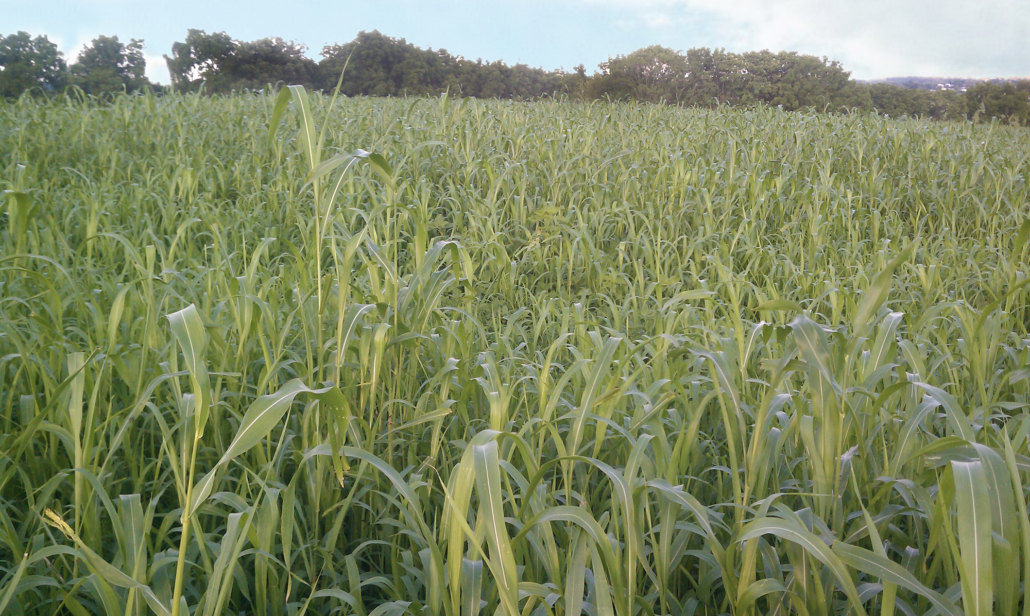
Sorghum-sudan pasture. Photo: Lee Rinehart, NCAT
For a late spring seeding, consider buckwheat, sorghum-sudan, corn, or millet. To establish them effectively, the best thing you could do is to try to “use up” the root reserves of the perennial pasture prior to planting the cover crop. This can be done by grazing the perennial pasture hard in the fall and again after the spring flush. This will weaken the grass and reduce its ability to compete with planted crops in the spring. Experienced graziers who have done this have learned that grazing hard means really “grazing hard.” Otherwise, the perennial grass just has too much of a head start and too much energy reserves. Hard grazing may reduce perennial grass longevity, so it might be best, if you’ve never done it before, to try it first on a small parcel before you begin cover cropping a whole field. That way you can get a handle on just how hard you will need to graze your pastures prior to cover crop planting.
The next concern will be seed placement of the cover crop. Using a no-till drill will take care of this. Plant to the recommended depth and increase your seeding rate, as spring planting into sod comes with some potential problems such as grubs or wireworms.
I spoke with Gabe Brown about this after reading one of his articles. For fall seeding, he recommends no-till planting into the sod in early September with cover crops such as cereal rye and hairy vetch, which grow well before the perennials begin growth in the spring. Graze the covers in the spring and then immediately plant a warm-season annual mix directly into the residue. Pay close attention to the summer nighttime temperatures, which must be warm enough to get the warm- season annuals growing well.
One year of cover crops in perennial pastures tends to get nutrient cycling going and invigorates the grass stand, but two years in a row might set back some species such as alfalfa. If you want to improve soil health, pasture cover cropping may be a very good thing. Be mindful of timing, seed placement, and careful suppression of the perennial grass through grazing. Take a look at Gabe’s article, Seeding Cover Crops Into Perennial Sod, where he writes of his experience grazing cattle on perennial pastures and no-tilled cover crops in North Dakota.
Related ATTRA Resources
Building Healthy Pasture Soils
Other Resources
Pasture Cropping—The Innovative No-kill, No-till System Developed by Australian Farmers
This blog is produced by the National Center for Appropriate Technology through the ATTRA Sustainable Agriculture program, under a cooperative agreement with USDA Rural Development. ATTRA.NCAT.ORG.

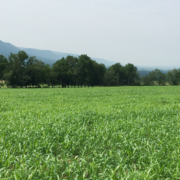
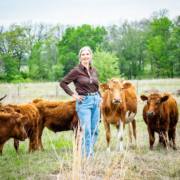

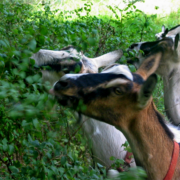
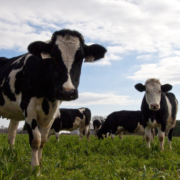
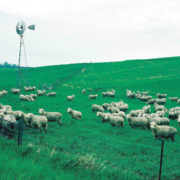
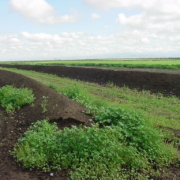 NCAT
NCAT NCAT
NCAT
